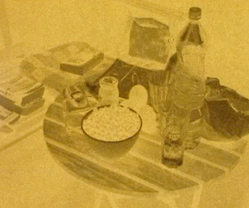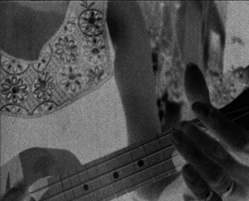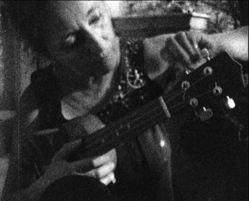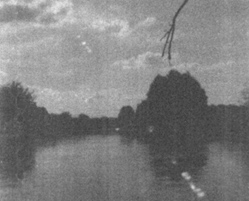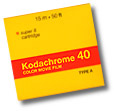
Kodachrome K40 is a legend.
This amazing warm-colored film started an era in the early sixties: a three minute film in a cassette – super 8 was born. It was processed in Kodak labs all over the world up until a few years ago. The last lab, Dwaynes in Kansas, US, developed the very last roll end of December 2010.
Can I process the K40 myself?
Yesno.
Kodak's original recipe is not a secret but quite complicated: 13 baths! (see right column).
You can't use E6 which works fine with all other color reversal films.
Kodachrome is a B&W film in reality, color dyes are added by three separate color developers.
Want to know more?
Kodak's recipe for specialists (PDF)
Dagie processing a film: „Spiralize it!“
A great article on self-processing (German only) (Friedemann Wachsmuth in „Schmalfilm“ – PDF)
But: you can process it black&white, negative or reversal.
For brave chemical splashers: I recommend Rodinal (not available anymore – take Adonal, same recipe!!) which is cheap and long-lasting. 7 minutes, 20 Centigrade, dilution 1:25. The greys are incredible, contrasts just awesome.
Diafine is even better and lasts 100 years I heard, I'll check it out and keep you informed!
If you don't want to try it yourself – I can do it for you, see here: processing service!
Click on the images below and watch my test film results:
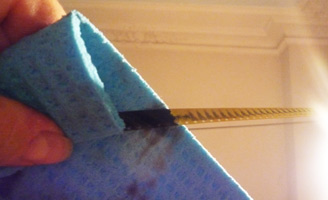

There's a great article on wonderhowto.com ...
... on cinematography.com ...
